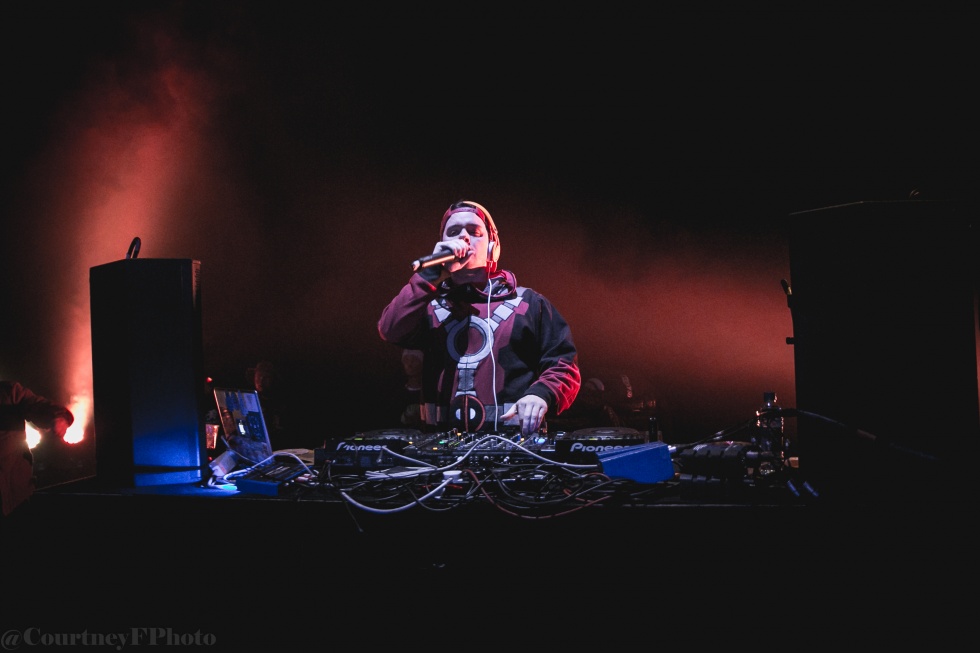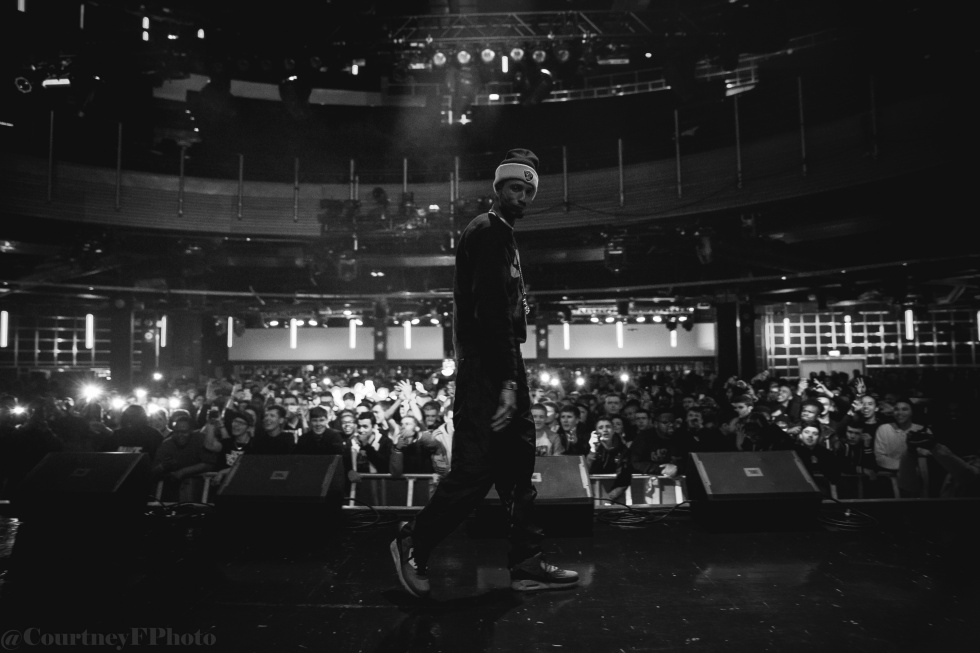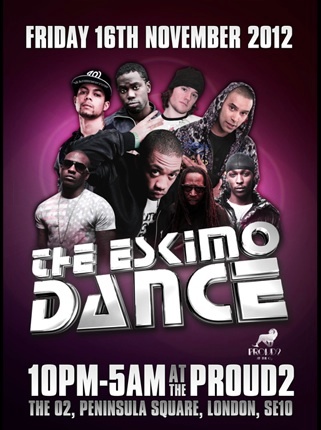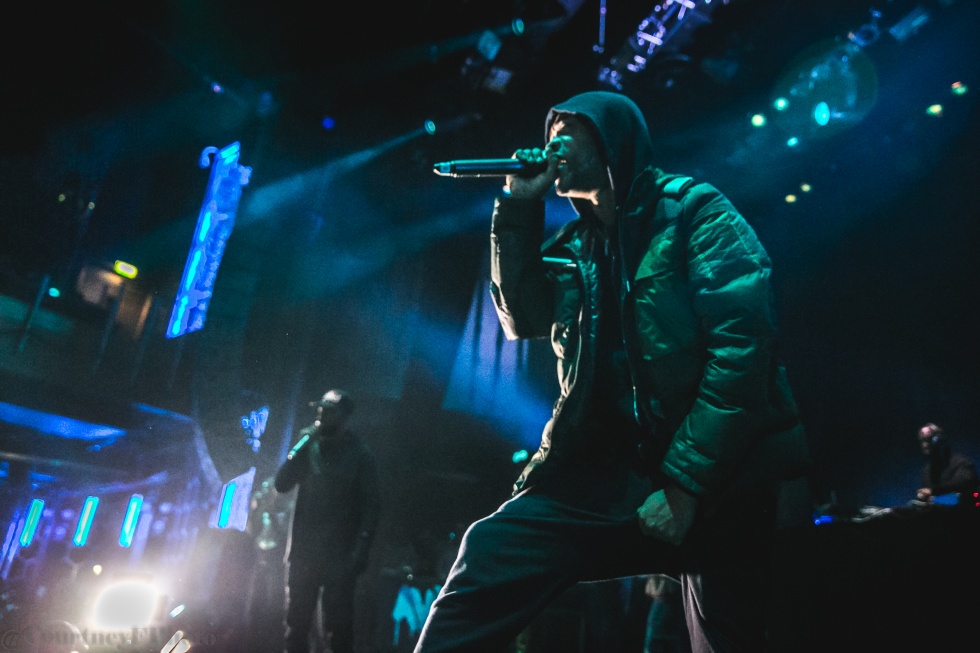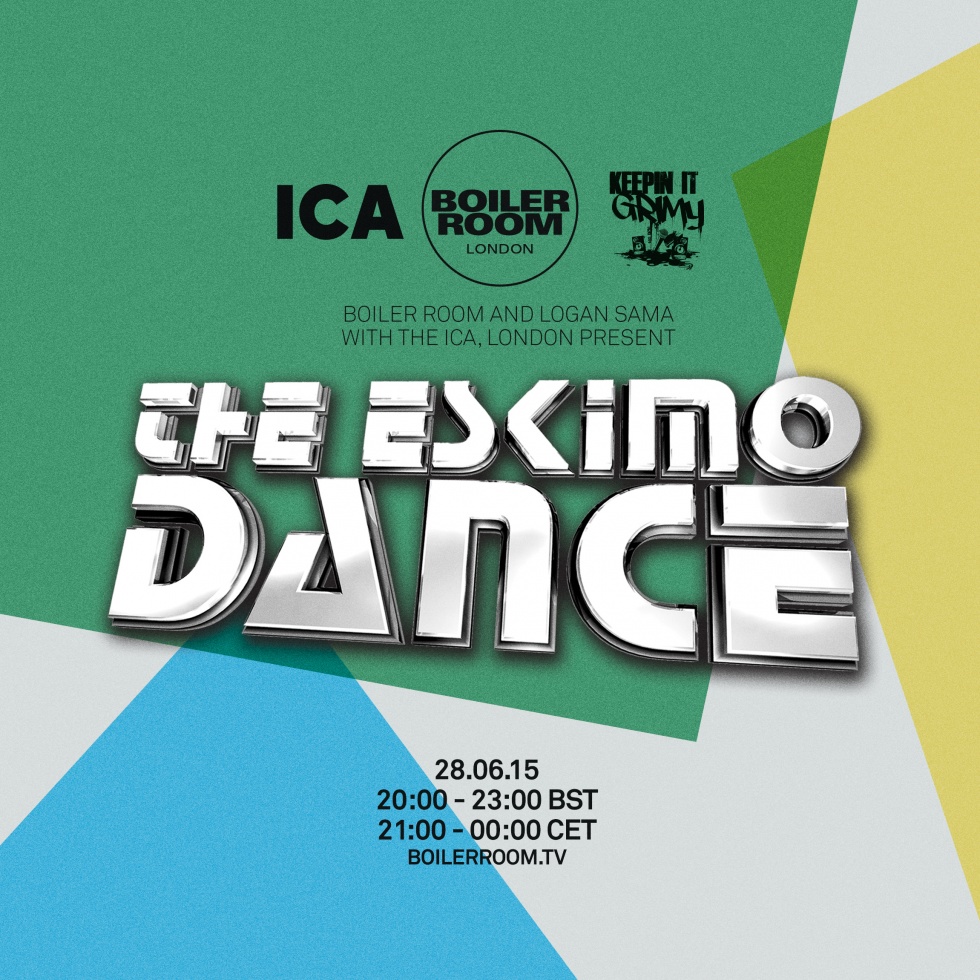
– Our next run-in with the Institute of Contemporary Arts is set to take things to yet another level of grime-based goodness. With four sessions already tucked away in the archives, June 28th sees Boiler Room collaborate with yet another seminal grime institute to showcase the genre’s all-round strength – The Eskimo Dance. The Eskimo Dance is widely considered as a holy grail for the movement – an influential, MC-fronted rave that helped shape the sound of London; initially between 2002 and 2005 before returning to the fray in 2012.
We invited grime disciple and Coyote Records label owner Tomas Fraser to traverse through the Eski Dance legacy and give a primer on our session . –
—
“You could always feel the tension, it was the event to be at”, recalls Steven Cee of some of the earliest Eskimo Dance raves “it was the most disorganised thing in the world but it was so, so raw.” Perched on a stool at Boxpark in Shoreditch, Cee – better known in grime circles as Cheeky – was tucking into a meal as recommended earlier that day by JME, who had actually left moments before we arrived. “There was just no organisation at all on the stages back then. Everyone was fighting for the mic, the decks, everyone wanted a reload. It was chaos, but that’s what made it special.”
The Eskimo Dance – grime’s first event series proper, brainchild of Wiley and home to a young raving community unlike anything London had seen before – was of course a far cry from the slick, well-oiled club night operations that younger grime fans can expect today. Originally formed off the back of Wiley’s desire to simply ‘put on a rave’ in 2002, its first ever home was at Area in Watford (just north of London) and Cheeky, who remains the brains behind the operation today explained: “Promoting nights back then was a piece of piss”, he explains, “a proper walk in the park. Once you have something that people want, all you need is a venue and the right line-up. Don’t forget, 18 year old kids weren’t listening to house back then – it was all garage and later, grime.”
“It was like an MC Cup Final, that’s probably the best way to describe it”
The night itself was unlike any other. Set times didn’t exist and everything was secondary to the MC – even the DJ. All that mattered was getting on stage and getting that reload – having a crowd respond and scream their bars back at them quickly became the proverbial holy grail for every aspiring young MC. “It was like an MC Cup Final, that’s probably the best way to describe it”, former Kiss FM DJ and Boiler Room collaborator Logan Sama notes in an email detailing his memories of Eskimo Dance, “and it was always hype because MCs from different collectives and areas were always competing to be the best on that day. It always felt like the culmination of all the work MCs put into radio sets for the months leading up to it.”
This format, although brazen and chaotic, birthed all sorts of different technical approaches to emceeing too – techniques that would seem completely alien to anyone but an Eskimo Dance crowd. “It was all about style and performance” continues Logan. “It’s such a raw and natural thing, performing to get a reaction out of your peers and the audience. And there’s so many ways to do that – that’s where the supreme creativity of grime thrives. You had super technical MCs alongside MCs repeating 4 line bars with one line flows all competing for crowd response.”
The image of huge groups of MCs jostling for position on stage, fighting for the mic and screaming at the DJ for a reload thus soon became an enduring one – but as Cheeky explains, it wasn’t always for the right reasons. “Admittedly, there was trouble back in the day. It often came from the kids who came along, they were on a hype ting back then but this is what I try to explain to MCs who wanna be like that now. That behaviour is what got grime blacklisted in the first place. I mean, at the last Eski before we went into hiatus, I think it was 2005, there was some proper trouble. It wasn’t a joke.”
“Think of the biggest rave you can now – that was Eski. If you were 18, it was the top rave, the cult place to be.”
Of course, it’s crucial to remember that the whole concept of Eskimo Dance was competitive for the MCs – and during the early raves, the timings often didn’t aid the potential for violence either. “Eski was originally all R&B, hip-hop and bashment until the last hour”, Cheeky recalls, “then it’d switch up and the grime would start.” With such a tight window to impress, the touch paper was lit for things to get out of hand – but it didn’t deter anyone from going. “Think of the biggest rave you can now – that was Eski. If you were 18, it was the top rave, the cult place to be. Everybody wanted to go to Eskimo Dance.”
For the car loads of kids that started to make their way up to Area, Eskimo Dances quickly became something more than just a club night – they were the lifeblood of something much bigger; the focal point of a community that although famously volatile, gave the MCs who performed a first taste of what potential superstardom felt like. “You’d have MCs hearing stuff on the radio or even just going to the studio, clashing and then taking everything straight to Eskimo Dance”, recalls Cheeky, “they just wanted that response, that opportunity, that reload – it was all the mattered to them.” As for the demographics, The Eskimo Dance crowds were never as male-dominated as people often think either. “In the crowd you had such a mixture of male and female out there all loving it”, recalls Logan Sama. “The girls were always skanking and the guys made the noise and raised gun fingers.”
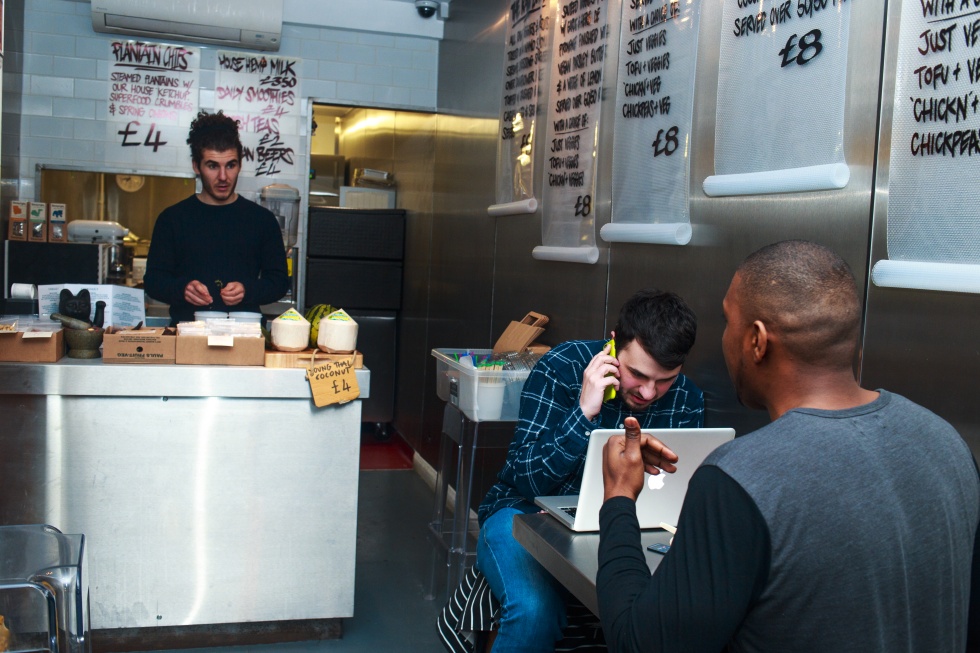 It’s just then that Cheeky has to take a call, while I start to chat to photographer Ashley Verse about potentially heading down to see Rinse FM’s Lord Of The Mics event later that night. “Here you go mate, it’s Wiley” he says all of a sudden, passing the phone across. I only manage to catch him for a couple of minutes, but I quickly ask him what Eskimo Dance means to him after all this time. “To be honest nowadays, Eskimo Dance isn’t about me or anybody else, it’s all about the young people, the MCs and the fans pushing it forward together. Back then, it was the first rave that showcased what we were doing and what we were about, but now it’s about the future.”
It’s just then that Cheeky has to take a call, while I start to chat to photographer Ashley Verse about potentially heading down to see Rinse FM’s Lord Of The Mics event later that night. “Here you go mate, it’s Wiley” he says all of a sudden, passing the phone across. I only manage to catch him for a couple of minutes, but I quickly ask him what Eskimo Dance means to him after all this time. “To be honest nowadays, Eskimo Dance isn’t about me or anybody else, it’s all about the young people, the MCs and the fans pushing it forward together. Back then, it was the first rave that showcased what we were doing and what we were about, but now it’s about the future.”
“Basically, getting on an Eskimo Dance line up is one of the goals of an MC growing up in London”
Of that future, few have come to the fore more prominently than Lewisham MC Novelist, who debuted at Eskimo Dance as an 18 year old alongside his crew The Square earlier this year in Bristol. “Basically, getting on an Eskimo Dance line up is one of the goals of an MC growing up in London, because it’s such a big part of the grime culture from the early days”, he explains to me, “and when we performed, it was sick because it was our first time – the crowd were so ready for every lyric.”
Given the trouble that forced Wiley to pull the plug on The Eskimo Dance in 2005, It wasn’t until 2012 that the Eski-Boy felt ready to relaunch it however the landscape, the culture, the approach to clubbing – everything had changed. That’s when Cheeky took full control of the reins. “It’s completely different now, nobody wants any trouble or anything like that – people just want to have a good time” says Cheeky. “It therefore needed to be done by the book in order for us to take it to the next level, so I decided to build a team all with the same outlook. My theory is a lot of the appeal now lies with the younger kids because the people who used to come along are adults now and lots of them will have stopped listening. What I do know is that anyone 18-24 sure as hell is going to know about Eski, so we’ve got a good few years to make it even bigger.”
The brand was pumped full of steroids: bigger venues, bigger line ups and mainstream media coverage along with a business structure able to rival major tour/festival companies. “Steven asked me to ‘help out’ with the return in 2012. Needless to say I was definitely gassed,” adds in-house PR and branding manager, Lilz. I grew up on grime and The Eskimo Dance was coming back so who was I to say no? Three and a half years later, we’ve sold out 10 shows in massive venues across the country and beach parties in Napa.”
With some of today’s best and most identifiable grime MCs having cut their teeth at the early raves – JME, Skepta, Kano, Flirta D, Riko Dan, Wiley himself – and some of the newer generation starting to earn their stripes on the same Eskimo stages, there’s always been an element of mystery to the selection process behind The Eskimo Dance. How much involvement does Wiley have? Who decides on the line-up? What does an MC need to do to get a booking?
“Eskimo Dance is about that response, reloads, interacting remember – it’s not about just turning up and performing.”
“You have to be saying something. People have to be screaming your name to get a booking at Eskimo Dance” explains Cheeky. “I pay attention so I know and I can see if an MC is real or not. Eskimo Dance is about that response, reloads, interacting remember – it’s not about just turning up and performing.” As for Wiley? “Wiley still oversees the line-up but when it comes to set times and organising the finer details, he isn’t that guy”, he laughs.
“Steven really has upped the bar. The Eskimo Dance is UK Grime’s Summer Jam, and we’ve proved people wrong by never having any trouble at our events. It’s an honour for an MC to make it on the line ups,” says Lilz. “We’ve had commercial support from giants such as Smirnoff, JD Sports and Red Bull, our sound is getting more and more out there and The Eskimo Dance has played a huge part in that.”
With events now starting to spring up across the UK, most recently in Bristol and Leicester, and even venture overseas to European clubbing spots like Ayia Napa during the summer months, it’s clear Cheeky’s vision for the Eski brand is starting to take shape. What’s more reassuring however, is that grime institutions like The Eskimo Dance – a vital part of the music’s culture, legacy, fabric – have proved they still have a big part to play going forward. “I remember Skepta complaining about set times at the last one we did”, laughs Cheeky. “He was just like ‘Eski ain’t about set times’ but now obviously we have to bow to club rules and regulations. It won’t hold us back forever though, I’m sure.”
Regardless of what the clubs say, the spirit of The Eskimo Dance feels more alive than ever.
– Boiler Room is joining forces with the ICA, Logan Sama and The Eskimo Dance on Sunday June 28th between 20:00 – 23:00 BST. Find out more information here. –
– Images by Courtney Francis + Ashley Verse –
